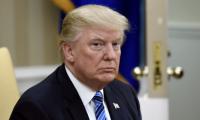There could be a way out of this pandemic if we can see past what we believe, about the transmission and management of the disease. Asymptomatic and aerosol transmission have been revealed as blind spots; transmission though polluted air may prove to be a third one, no less consequential.
From the outset, the messaging of those in authority has been consistent: keep our distance, wash our hands, wear masks near others, and lock ourselves down in an outbreak. All of this has been necessary, but judging from the persistence of the disease, not sufficient.
We can trace this focus to what can be called Level 1 transmission: direct exposure to an identifiably infected individual. Some scientists, however, have asserted the case for what can be called Level 2 transmission, indirect, at a distance, in two forms: asymptomatically and through aerosols. People who show no sign of infection can infect others, and people can get infected people can get infected through viruses attaching themselves to tiny droplets, called aerosols, that have remained active in the air well beyond two meters – for example, passing through the ventilating system of a senior residence.
Recently, finally, the World Health Organization acknowledged both blind spots, at least in theory: practice remains fixated on the Level 1 interventions, for example that masks should be worn in the presence of others, even though the aerosols can lurk beyond that.
Now another blind spot may be looming. In March, a team of scientists in Italy reported that the viruses could adhere to particles of polluted air. If so, they may be able to travel much farther, perhaps even across a polluted city. This finding, reported sporadically but not considered seriously, could be of major significance, by helping to explain a number of anomalies associated with the pandemic.
For example, while cases of Covid-19 can be found almost everywhere, outbreaks have tended to be more concentrated. All ten of the largest early outbreaks – in China, the United States, Italy, Spain, and Germany – occurred in areas of heavy pollution. Moreover, studies of some cruise ships and senior residences had found high levels of contamination in the indoor air. Might the state of that air help explain why such major outbreaks have occurred in some such facilities, even where people were locked down? And why did the early outbreaks in Wuhan and South Korea end rather abruptly? Level 1 indicates that people locked down can’t transmit the virus; pollution at Level 2 adds that people who are locked down stop polluting as usual. If so, then reopening an economy could bring about the second wave of the pandemic.
Smoke is a form of pollution that has been curiously present in a number of prominent outbreaks: in and especially around hog plants in America that smoke ham, in Chinese open-air markets that roast ducks, in the American embassy in Riyad after a birthday BBQ, and in the closure of several fire stations in Toronto. Fighters of forest fires are also thought to be at greater risk of infection. In India, with funeral pyres so prevalent, might more people get sick as a consequence of more people being cremated?
Why should viruses in polluted air be any different than those circulating in clean indoor air? For three reasons. First, the currents in outdoor air might carry the connected particles a lot farther. While indoors, the viruses might permeate a facility, outdoors they might spread across a city. If they can circulate in a café, why can’t they spread to an adjoining terrace? Then, how about a string of such terraces along a street? And finally, across a polluted city with many such streets?
The second reason is suggested in a study of the elevated incidence of the flu when Brazilian farmers were burning their debris. The author explained that the UV rays of the sun, which would normally inactivate the virus, were blocked from doing so by the ceiling of heavy smoke. The same could, of course, happen in a polluted city, thereby enabling viruses, carried by aerosols travelling in the air, to remain active for longer periods of time.
And third, on the ground, we have evidence that people with prolonged exposure to pollution are not only less able to cope with the infection, but also more likely to get it in the first place, because that air has compromised their immune systems.
Put all this together and we have a substantial case for considering pollution in the management of this pandemic. Indeed, it is a far stronger case than for what we are currently doing, namely opening our economies, and our schools, and hoping for the best. Some strategy!
We faced a devils’ decision – to kill our economies by keeping them closed or to open them up at the risk of killing more of ourselves – and made our choice. Save our economies, and in the process send our children back to school as a first line of offence, in some places without the very protections that the authorities have been urging us to take all along. Have we learned nothing from the outbreaks in senior residences?
For six months, I have sought to make the case for pollution, with epidemiologists and op editors. Back came the reply, time and again: “Not enough evidence.” Compared with hoping for the best while waiting for a vaccine?
Here is what could be the makings of a comprehensive strategy. For starters, no one should be allowed into any building – child in a school, worker in a plant or office, spectator in an arena – that has not been certified free of free of virus-carrying aerosols and safe from contaminants that could carry them, while full use is being made of equipment to inactivate any new virus to inactivate any virus that might arise.
Likewise, substantial smoke-producing processes need to be suspended pending tests to ensure that they are not sources of infection. And during an outbreak, people in the vicinity of polluted air, outdoors and indoors, alone and in groups, need to be wearing masks that protect themselves and not just others.
Above all, we shall have to stop the polluting. Just like that? Yes, for several reasons. Most immediately, doing this might enable us to avoid the second waves. Are there any options on the table that recognize Level 2 transmission? Because of the lockdowns, some cities now find themselves pollution-free: they need to stay that way. And many other cities have been well on their way there, thanks to the use of recycling and cleaner forms of energy as well as promoting changed patterns of communing. The shift from manufacturing to service sectors of the economy has also helped reduce pollution, as has the regulation of heavy polluters. For those that remain, surely selective closings make a lot more sense than unrestricted openings.
By stopping pollution, we can embark on a win-win course beyond this pandemic. We know that polluted air has been killing many people for many years, and that climate change will be killing many more. One of the great ironies of this pandemic could turn out to be the unprecedented window of opportunity it provides to address a far more serious threat. Take it and our progeny, on a planet that has had enough of our warming, will be forever grateful.
(Copyright) Henry Mintzberg 2020, under a Creative Commons Attribution-NonCommercial 4.0 International License.
The writer is Cleghorn Professor of Management Studies at McGill University and author of ‘Managing the Myths of Health Care’ (more questioning of the correctness) and ‘Rebalancing Society’.
People stand in line up as election officials check their ballot papers during voting general election at a polling...
Women show their voter identity cards as they stand in a queue before casting their votes in Agartala. — PTIThe 18th...
Former prime minister Imran Khan. — Instagram/ imrankhan.ptiAn old saying has it that “when you dance with the...
Kashmiris in Indian illegally occupied Kashmir protesting against the Indian occupation as the forces of India looked...
A representational image showing residents walking at a wholesale market in Karachi. — AFP/FileOnce again there is...
A representational image showing late Pakistani human rights activist and Supreme Court lawyer Asma Jahangir. —...







